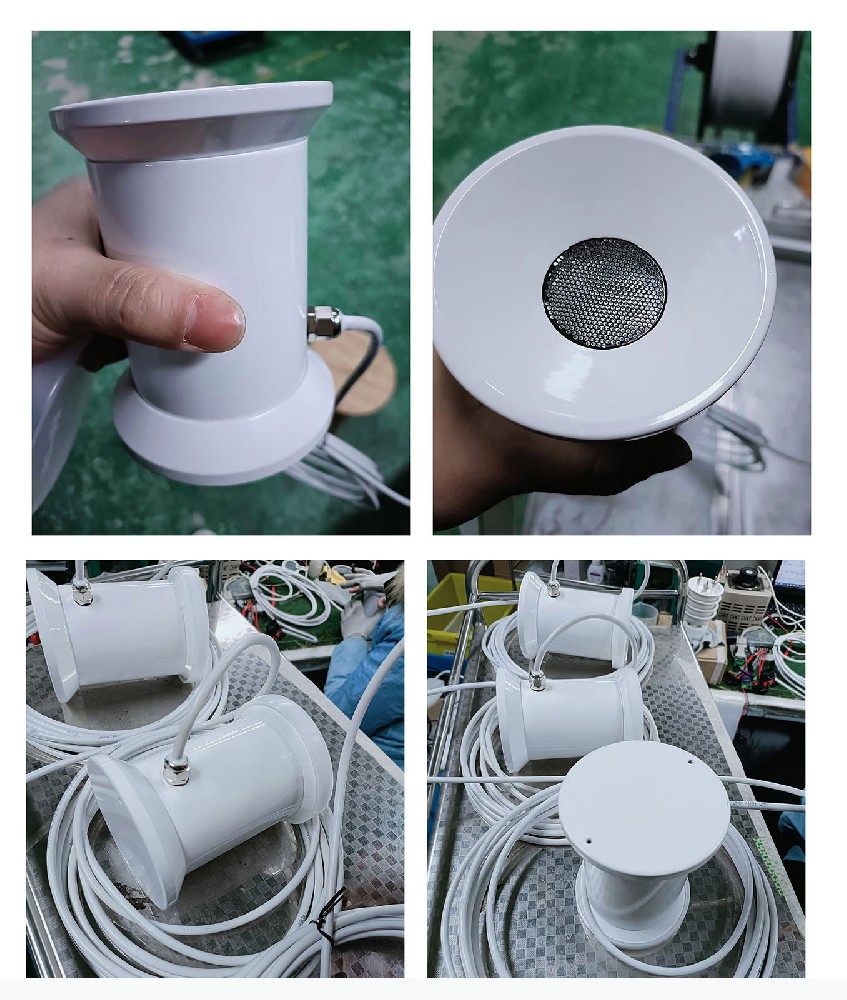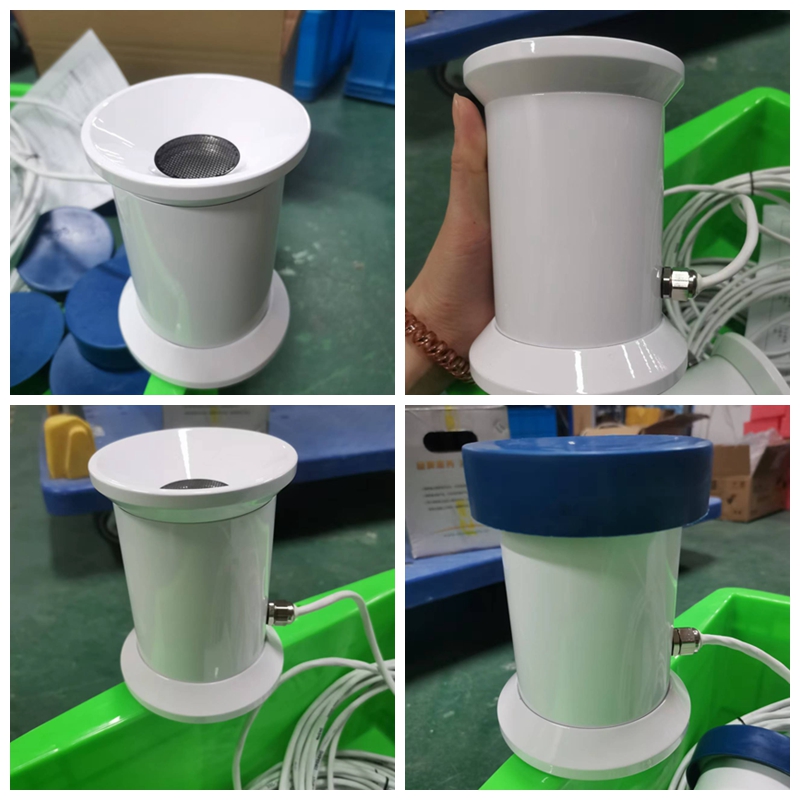

— Products —
 Consumer hotline +8618073152920
Consumer hotline +8618073152920 WhatsApp:+8615367865107
Address:Room 102, District D, Houhu Industrial Park, Yuelu District, Changsha City, Hunan Province, China
All products
ultrasonic snow depth sensor is a sensor that uses the ultrasonic principle to measure snow depth. It works by the sensor transmitting ultrasonic pulses and receiving signals reflected back from the snow surface. By measuring the time interval between the transmission and reception of the ultrasonic waves, the depth of the snow can be calculated. Snow depth sensors are commonly used in applications that require knowledge of the amount of snow on the ground, such as avalanche ···
Tel/WhatsApp:+8615367865107
Email:Arvin@niubol.com +Nearly 100 partner company in more than 68 countries. We are committed to providing high-quality, practical products to meet your needs and help you solve problems.Product Details
An ultrasonic snow depth sensor is a sensor that uses the ultrasonic principle to measure snow depth. It works by the sensor transmitting ultrasonic pulses and receiving signals reflected back from the snow surface. By measuring the time interval between the transmission and reception of the ultrasonic waves, the depth of the snow can be calculated. Snow depth sensors are commonly used in applications that require knowledge of the amount of snow on the ground, such as avalanche warning systems, snowplow operations and weather monitoring. Snow depth sensors offer high accuracy and reliability and can be adapted to different environmental conditions.
| Power | DC 12V / City electricity |
| Communication method | RS485 |
| Power consumption | Normal temperature :180mW; Low temperature (<5'C) turn on heating : 3W |
| Baud rate | 9600bps |
| Measuring range | 0-1000mm |
| Working environment | -40℃-50℃; ≤100%RH |
| Storage environment | -40℃-65℃; ≤100%RH |
| Measurement precision | ±0.1%FS |
| Length of cable | Standard 5 meters |

The following are the working principles of ultrasonic snow depth sensors.
1. Ultrasonic snow depth sensor working principle.
The sensor emits ultrasonic pulses into the snow surface. These pulses are then reflected back from the snow surface and returned to the sensor. The time it takes for the pulses to reach the snow surface and return is measured.
By knowing the speed of sound in the air and the time it takes for the ultrasonic pulse to travel, the sensor can calculate the distance to the snow surface. The depth of the snow is then determined by subtracting this distance from the known height of the sensor above the ground.
2. Ultrasonic Snow Depth Sensor Advantages.
Non-invasive:Ultrasonic sensors do not require physical contact with the snow, which makes them suitable for remote monitoring.
Temperature dependent:The speed of sound in the air is affected by temperature, so ultrasonic sensors can provide accurate measurements if they take this temperature variation into account.
Easy to install:These sensors can be easily mounted on poles or buildings and they can be integrated into existing weather monitoring systems.
Continuous real-time measurements can be provided.

3. Limitations.
Humidity dependence:The speed of sound in the air is also affected by humidity, which may introduce errors in the measurement if not compensated for.
Snow Characteristics:The density and structure of snow can affect the propagation of sound waves and may affect the accuracy of the measurement.
Cold temperatures:In very cold temperatures, air density can change, which may require calibration or adjustment to ensure accurate measurements.
4.Ultrasonic Snow Depth Sensor Applications:
Ultrasonic snow depth sensors are commonly used in a variety of applications including weather monitoring, avalanche forecasting, snowpack analysis and winter sports management. They provide real-time data on snow depth, which is critical for decision-making in these areas.
Ultrasonic snow depth sensor application scenarios include:
1. meteorological observation: used to measure snow depth and provide data to support meteorological forecasting and climate change studies.
2. Traffic management: used to monitor the snow accumulation on roads, providing a basis for traffic control and snow removal.
3. agricultural monitoring: used to assess the penetration of snow water into the soil, which is important for agricultural production.
4. environmental monitoring: to monitor the snow cover area and snow melting, providing data support for environmental research and protection.
5. geological research: used to measure the depth of glaciers and snow fields, providing data support for geological research and glacier monitoring.
Ultrasonic snow depth sensor price
The price of ultrasonic snow depth sensors varies depending on the brand, model, performance and other factors, and you need to consult the relevant supplier or manufacturer for the exact price. In general, prices may range from $500 to $2,000.
Overall, ultrasonic snow depth sensors provide a convenient and reliable solution for snow depth monitoring in a variety of environments.Ultrasonic snow depth sensors are a practical and reliable choice for many applications, especially where non-invasive and relatively fast measurements are needed. They are widely used in the meteorological, transport and winter sports industries to provide valuable data on snow conditions.
Prev:Solar pyranometer
Sensors & Weather Stations Catalog
Agriculture Sensors and Weather Stations Catalog-NiuBoL.pdf
Weather Stations Catalog-NiuBoL.pdf
Related recommendations
 Multi-Depth Soil Sensor RS485
Multi-Depth Soil Sensor RS485 TDR Soil Moisture Sensor
TDR Soil Moisture Sensor Pyranometer Solar Radiation Sensors
Pyranometer Solar Radiation Sensors Soil ph sensor
Soil ph sensor Tipping Bucket Rain Gauge
Tipping Bucket Rain Gauge Air Temperature and Humidity Sensor
Air Temperature and Humidity Sensor
Screenshot, WhatsApp to identify the QR code
WhatsApp number:+8615367865107
(Click on WhatsApp to copy and add friends)
